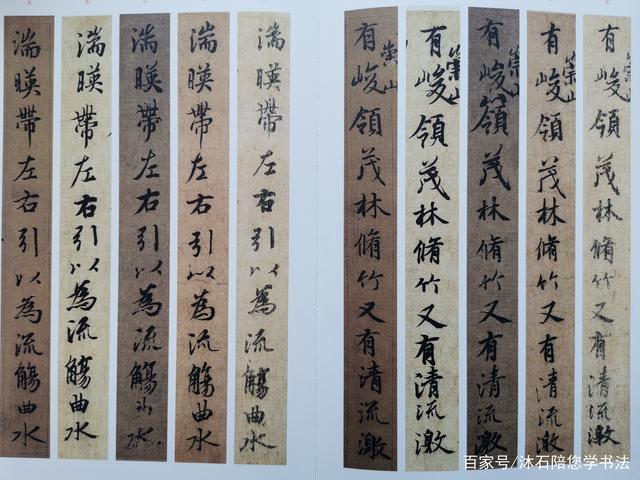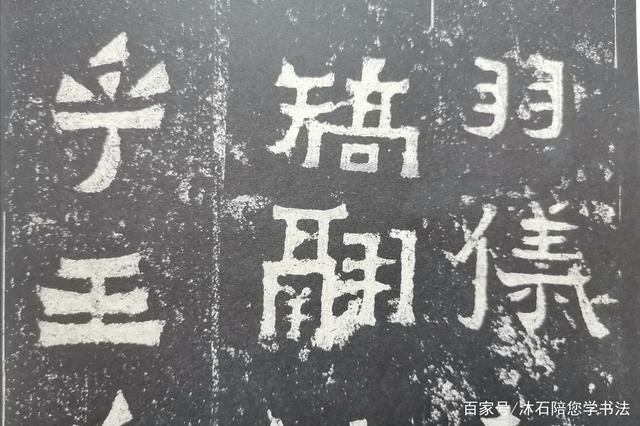Everyone studies Wang Xizhi and all according to the same calligraphic copybooks; however, after a certain period of training, the hieroglyphs written by different people are significantly different from each other: in some they are stronger and more powerful, in others they are more elegant, and as a result the same hieroglyph in different people looks different.
This applies not only to ordinary amateurs. Even when famous masters of calligraphy copied the works of Wang Xizhi and despite the fact that it was writing in the copybooks, the mood in their works turned out to be different. For example, when Yu Shinan and Chu Suiliang, as well as other calligraphers copied the Preface from the Orchid Pavilion, the hidden meaning expressed in their works was somewhat different. This is despite the fact that the masters tried to get closer to Wang Xizhi, preserve the features of his style.
Have you ever wondered why this is happening? The fact that the establishment of such differences may have contributed to the study of calligraphy?
Speaking about the styles in calligraphy, Sun Gotin in his work Shupu says the following: “Although you learn one direction of calligraphy, different styles can subsequently develop, everyone without exception follows their own individuality and aspirations, everyone has a special manner. Who has a direct character, he writes evenly, but he does not have enough strength and beauty. If the character is strong and rude, then the style will be “obstinate” and it will lack softness. The drawback of the work of cautious and strict people is restraince, while the work of frivolous people is characterized by violations of strict rules.
Sun Gotin has the following in mind: the way a person writes hieroglyphs depends on his character. If you have a persistent, adamant character, your calligraphy style will usually be the same. And if you are a person who only looks simple outwardly, but who has inherent inner wisdom, then the hieroglyphs will look more soft and elegant.
After reading this, some might think: then if Sun Gotin said that the style of writing is connected with character, and character is difficult to change, then we can rely only on it, and we do not need to think about anything else.
But this is a rather superficial conclusion, and you should not rely on it. Since personal experience accumulates over time, the character of a person also changes. Is your way of thinking the same now and five years ago? And when a person reaches middle age, a big change is likely to happen in his attitude to life.
The same applies to the study of calligraphy: the style is not something frozen; it can change during the study.
I will give a simple example. If you are a person with a strong character, then the lines in the hieroglyphs will be strong and energetic. If there is power in the features, it’s good, but if it looks like something excessive, this is not very desirable. The best thing is when the style combines both strength and softness. This is the only way to achieve the beauty of the “golden mean”, and this will be more consistent with the basic idea and aesthetic perception of the art of calligraphy.
What if the style looks too harsh, as if showing off all its advantages? You can choose several words with a softer style and learn how to copy such a style. For example, Yu Shinan’s brush style is restrained, but rather strong, and having learned from it, we can incorporate some other writing styles into our style. It’s like making friends. If you communicate for a long time, the identity of your friends will influence you.
And what if you initially write hieroglyphs very subtly and elegantly? The meaning is the same: you can find a copybook with a more energetic and at the same time smooth style and thus help yourself discover a new one.
The reason this integration is so emphasized is not to change ourselves, but to improve. The art of calligraphy draws attention to the transfer of feelings and emotions by the master, but not all emotions can and should be adequately expressed. It must be understood that emotional integration into the text does not mean that you need to thoughtlessly give free rein to all your feelings: we still have to demonstrate mainly their beautiful and positive component. In situations where we have not yet completely learned something, it is necessary to adopt the best characteristics that we do not possess, and transfer all this to our own work system. In the end, through brush and ink, we can express the most lively and active side of our personality. As Sun Gotin evaluated the art of Wang Xizhi: aspirations are calm, not sharp and not rigid, but the expression of feelings and the style of writing form a beautiful unity.




